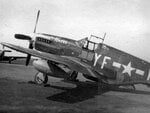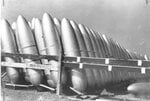drgondog
Major
Probably sketchy at best as I think most F models had 12 exhaust stubs. From the Czech book Monographie 1 "Bell P-39 Airacobra" by Jacek Tomalik - AJ Press 2000
EDIT: added translation - aircraft serial number 41-7246 with additional tank with volume 110 US gal. (416 dm³) and atypical exhaust pipes "fish tail"
That looks like a 75 gallon steel tank - US manufacture.

![354 WRF_ Lorie II_WRF Murray and Caldwell-CC [caldwell].jpg](/forum/data/attachments/631/631813-5e650e45eb314e8fc1288c5ac7dd9639.jpg)
![354 WRF_Lorie V_Lenfest_aug1944 [lenfest].JPG](/forum/data/attachments/631/631814-0c940910ad6298ff3934c10968506eaf.jpg)
![357 OS-T Eager Eve 42- [ramsdell].jpg](/forum/data/attachments/631/631815-25afc1fc18e4e6919bf6b45407187092.jpg)

